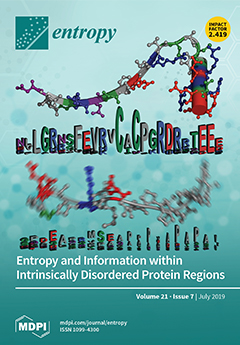Complex nerve remodeling occurs in the injured brain area during functional rehabilitation after a brain injury; however, its mechanism has not been thoroughly elucidated. Neural remodeling can lead to changes in the electrophysiological activity, which can be detected in an electroencephalogram (EEG). In
[...] Read more.
Complex nerve remodeling occurs in the injured brain area during functional rehabilitation after a brain injury; however, its mechanism has not been thoroughly elucidated. Neural remodeling can lead to changes in the electrophysiological activity, which can be detected in an electroencephalogram (EEG). In this paper, we used EEG band energy, approximate entropy (ApEn), sample entropy (SampEn), and Lempel–Ziv complexity (LZC) features to characterize the intrinsic rehabilitation dynamics of the injured brain area, thus providing a means of detecting and exploring the mechanism of neurological remodeling during the recovery process after brain injury. The rats in the injury group (
n = 12) and sham group (
n = 12) were used to record the bilateral symmetrical EEG on days 1, 4, and 7 after a unilateral brain injury in awake model rats. The open field test (OFT) experiments were performed in the following three groups: an injury group, a sham group, and a control group (
n = 10). An analysis of the EEG data using the energy, ApEn, SampEn, and LZC features demonstrated that the increase in SampEn was associated with the functional recovery. After the brain injury, the energy values of the delta1 bands on day 4; the delta2 bands on days 4 and 7; the theta, alpha, and beta bands and the values of ApEn, SampEn, and LZC of the cortical EEG signal on days 1, 4 and 7 were significantly lower in the injured brain area than in the non-injured area. During the process of recovery for the injured brain area, the values of the beta bands, ApEn, and SampEn of the injury group increased significantly, and gradually became equal to the value of the sham group. The improvement in the motor function of the model rats significantly correlated with the increase in SampEn. This study provides a method based on EEG nonlinear features for measuring neural remodeling in injured brain areas during brain function recovery. The results may aid in the study of neural remodeling mechanisms.
Full article






